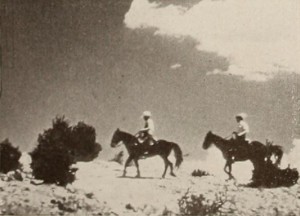
"Riders of the Pecos is a movie of a "dude ranch" with all the close shots of interesting and significant details that usually are missing in "dude ranch" films. During a summer vacation, few take the time and effort to make as human and colorful a document as has E. M. Barnard. He has caught the dust of the corral, the appetites of the open and even the barn dance. It is a horsy film, of course, with sequences of roping, "bronco busting" and plain and fancy riding. But best of all are the charming shots of a horseback trip and the campfire at the trail's end. There is a neatly turned "running gag" of a young equestrienne who is first seen repeatedly as more concerned with her brightly polished boots than with riding. But, after a few suppers off the mantel, she adds more dust and scars to her boots than got there naturally and becomes a real cowgirl." Movie Makers, Dec. 1941, 567.
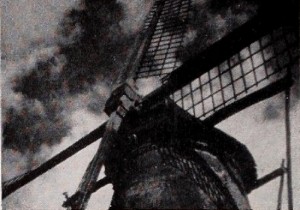
"In Rogge (meaning "rye"), G. J. Gast, jr., of Almelo, Holland, set out to make merely a record film of farm life in a community still committed to primitive farming methods. An ardent realist, he lived with his subject family for nearly a year before shooting his film, which was another full year in the making. An artistic cinematographer. he came up with something more than a record film. Exquisitely framed filter shots emphasize the contrasting values of light and shadow, giving the film a richly rewarding old-master quality. He achieved this by an understanding exploitation of the black and white medium. Unfortunately, his overzealous realism caused some of the interiors in Rogge to be very poorly lighted, detracting from the overall excellence of the film." Movie Makers, Dec. 1948, 495.
"Full coverage of the care and raising of sheep through the year." (EAFA Database)
"This story of a loaf of bread begins with the plowing of the ground. It continues thru discing and harrowing. Then come fields of waving wheat; the harvest and the threshing; the journey to the grain elevator and the flour mills. Scenes in a modern bakery follow and from there the bread is sent to the retail store. Children eating bread and jam are representative of the 'ultimate consumer'." Educational Film Catalog, 1937 edition, 80.
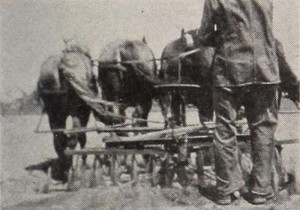
"Good organization of material and excellent photographic presentation of a familiar story make The Staff of Life, by Jack L. Krapp, an attractive and interesting film. Mr. Krapp has an eye for beauty in everyday subjects, and his progressive story of raising, harvesting and milling wheat leaves no detail uncovered in its searching, yet interesting story. Baking procedures are equally thoroughly covered, all in competent cinematography. For those who feel handicapped when working in 8mm., this film would be an inspiration, for certainly one is conscious of no limitation. A noteworthy feature is the clean cut handling of the titles." Movie Makers, Dec. 1939, 636.
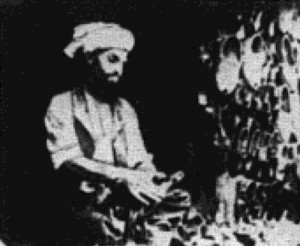
"The Stones of Eden is a documentary on the modern day life of a common wheat farmer in Afghanistan. Today he ekes out his living about the same as he did 2000 years ago. We see him fasten the yoke to his oxen and till the hard dry soil with a primitive plow. Five times a day he stops to kneel in prayer, no matter where he is. We see the grinding of wheat and the baking of bread. At the village the farmer exchanges his wheat for a few necessities, then leaves the village, his only contact with the 20th Century, for his fortified walls of stone to keep out wild animals, human enemies, and other fears. The film won the MPD Student Film Award" PSA Journal, Sept. 1965, 50.
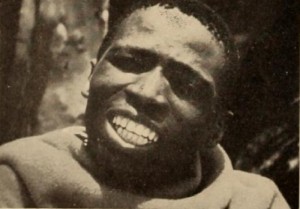
"Through the eyes and experiences of Matsela, a statuesque native of Basutoland, South Africa, Lewis Lewis reveals a stirring story of the triumph of modern agricultural science over the warring elements of nature. The account of how Matsela and his people all but perish in the dust bowl created by malevolent storms and drought, how he studies under a government program of soil reclamation and triumphantly puts his new training to work, provides an absorbing drama and an enlightening document on one of the world's grave problems. Although dealing with literal facts, Mr. Lewis dramatizes the incidents in his story with telling skill. Superb camera work and an attractive variety of viewpoints aid the dramatic effect, while a fascinating score of native songs further enhances the presentation. Save as a scientific record, the film is somewhat overlong, with the second of three 900 foot reels regrettably slow paced after the swift excitement of the opening chapter." Movie Makers, Dec. 1949, 455.
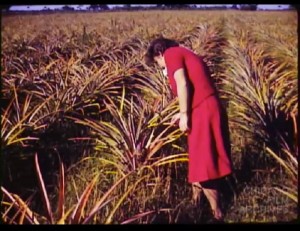
"2 part edited travelogue of the industries and everyday life in featured cities of Cuba. Part 1 begins in Havana before travelling to smaller cities, with a focus on buildings, crops and the everyday lives of the people. Part 2 primarily focuses on industry and includes scenes of a tile factory, basket weaving, as well as the farming of potatoes, sugar cane, bananas, and peanuts. The film also features historical monuments, boating, children at school, cock fights, vendors selling wares, and fishing. People demonstrate manual methods of labor like harvesting crops and cutting grass with machines lead by cattle." Chicago Film Archives.
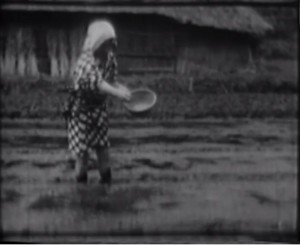
"Documentary: On the life of rural rice farm families in Japan." National Archives.
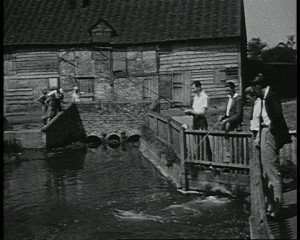
"Amersham and the surrounding countryside in different seasons." (EAFA database)
Total Pages: 9